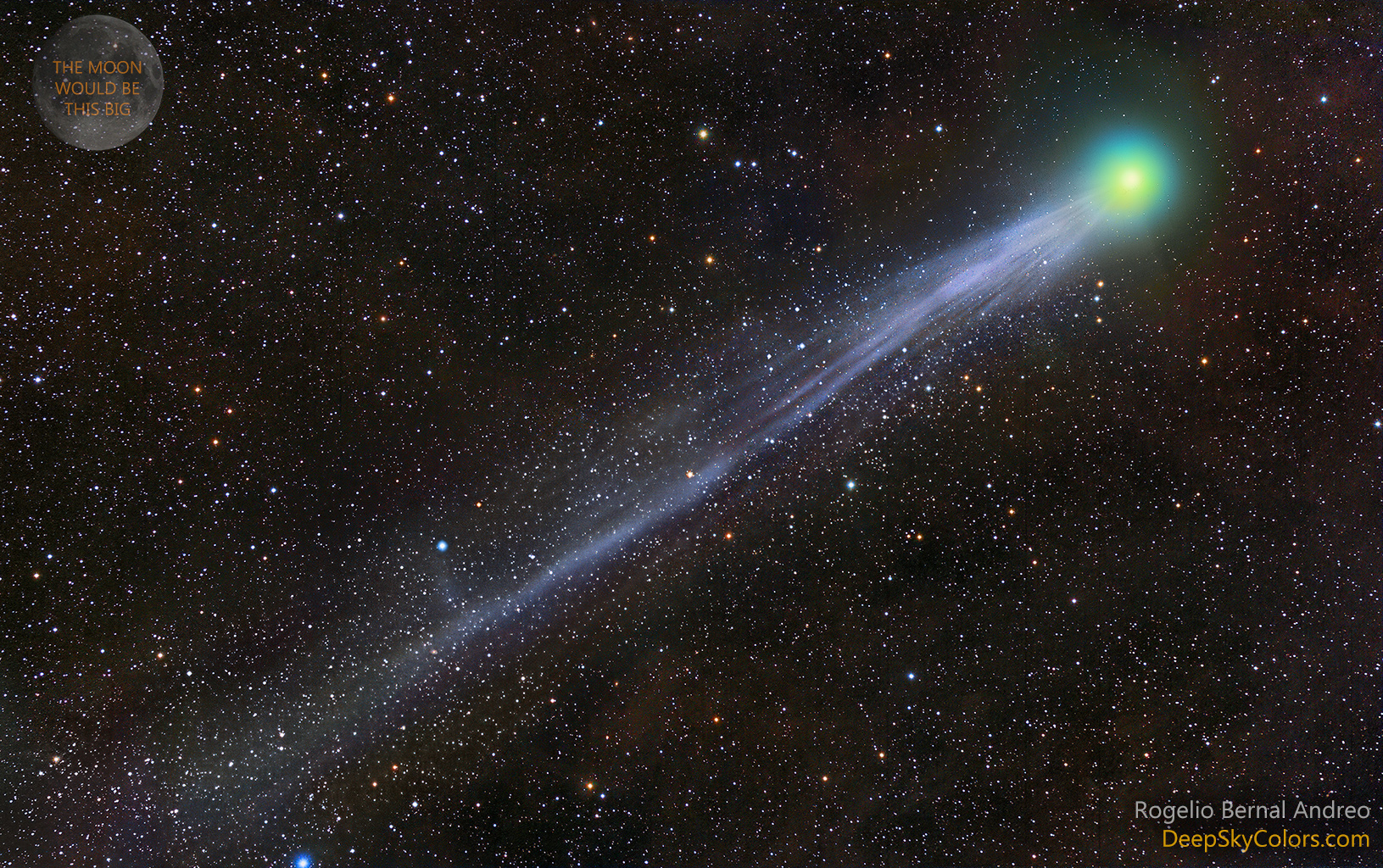
Copyright:Rogelio Bernal
Andreo
中文翻譯:
🌌 掃過地球北方天空的情景,愛情喜彌(Comet Lovejoy)的綠色彗髮和藍色離子尾巴在金牛座(Taurus)這片星空中蔓延,攝於1月13日。左上角的插圖顯示出滿月的1/2度角大小作為參考。因此,愛情喜彌的彗髮在天空中的呈現稍微小於(但亮度卻大相逕庭於)滿月,而其尾巴在畫面中延伸超過4度,這相當於在彗星距離地球約7500萬公里的情況下,超過500萬公里。
受太陽風推動,彗星微弱而結構分明的離子尾巴正向外流逝,隨著愛情喜彌接近近日點(perihelion)—於1月30日達到與太陽的最接近距離,其尾巴亦在增長。彗髮的綠色由二原碳(C2)氣體在陽光下的荧光效應所產生,而較暗的藍色尾巴則是受到離子化一氧化碳(CO+)發射的影響。
#愛情喜彌 #CometLovejoy #天文學 #星空 #金牛座 #科學 #太陽系 #天文現象 #宇宙探索 #滿月北上 #彗星 #離子尾巴
原文:
Sweeping north in planet Earth’s sky, Comet Lovejoy’s greenish coma and blue tinted ion tail stretched across this field of stars in the constellation Taurus on January 13. The inset at the upper left shows the 1/2 degree angular size of the full moon for scale. So Lovejoy’s coma appears only a little smaller (but much fainter) than a full moon on the sky, and its tail is visible for over 4 degrees across the frame. That corresponds to over 5 million kilometers at the comet’s estimated distance of 75 million kilometers from Earth. Blown by the solar wind, the comet’s tenuous, structured ion tail streams away from the Sun, growing as this Comet Lovejoy heads toward perihelion, its closest approach to the Sun, on January 30. While diatomic carbon (C2) gas fluorescing in sunlight produces the coma’s green color, the fainter bluish tail is tinted by emission from ionized carbon monoxide (CO+).
來源:NASA每日圖片


